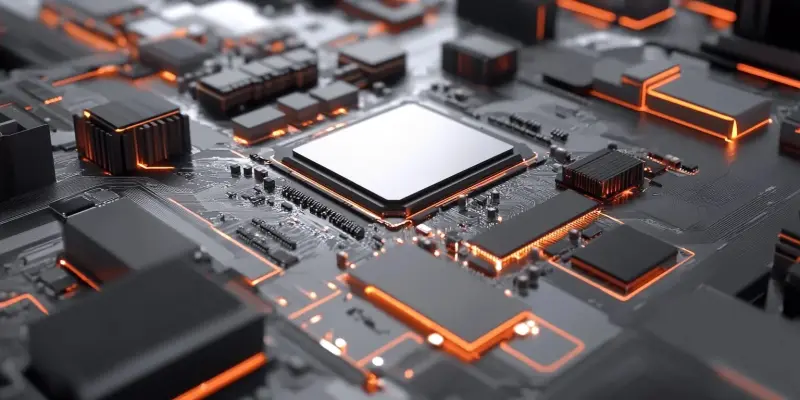Intel has officially unveiled its future plans for PC processors, specifically spotlighting the eagerly anticipated “Nova Lake” architecture set to launch in 2026. This announcement came during a recent quarterly earnings call, catching the attention of industry experts and enthusiasts alike. This next-generation CPU, designed to succeed Intel’s upcoming Arrow Lake processors, will encompass both desktop and laptop variants, promising a range of enhancements over existing models. Intel’s co-CEOs, Michelle Johnston Holthaus and David Zinsner, emphasized the significance of Nova Lake in Intel’s strategic roadmap, which highlights its role in the company’s future growth and competitive positioning. Nova Lake is planned to succeed Panther Lake, a key architecture set to debut in late 2025, and Intel has committed to leveraging a sophisticated manufacturing approach to maximize performance and efficiency.
Manufacturing Strategy and Performance Goals
Panther Lake will primarily be produced in Intel’s own fabrication facilities, ensuring full control over the production process. However, Nova Lake will take a more diversified approach by employing both internal and external manufacturing sources. This strategy may potentially involve partnering with Taiwan Semiconductor Manufacturing Company (TSMC) to utilize their advanced 2nm gate-all-around (GAA) transistor technology. Integrating TSMC’s cutting-edge technology aims to push the boundaries of performance and power efficiency, aligning with Intel’s goal of staying ahead in the competitive CPU market. With mass production scheduled to commence in late 2025, Intel plans to set the stage for Nova Lake’s market entry by ensuring ample supply and optimized manufacturing practices.
Intel’s roadmap clearly emphasizes not just iterative improvements but significant performance leaps across the entire PC spectrum. By adopting a dual-sourced manufacturing strategy, Intel aims to mitigate risks and ensure scalability right from the onset. David Zinsner has highlighted how this approach could bring substantial gains in performance and efficiency, thereby helping Intel to fortify its market position against strong rivals like AMD and Qualcomm. Current challenges faced by the Lunar Lake processors, primarily the high costs associated with integrated memory, have had an impact on profit margins. Michelle Holthaus indicated that Intel is actively working on addressing these issues and aims to deliver more cost-efficient solutions with Nova Lake.
Strategic Moves and Competitive Landscape
In an effort to maintain a competitive edge, Intel has spun off its foundry operations into an independent subsidiary. This new entity is designed to compete not only in the external market but also to win Intel’s internal business, fostering a more competitive and innovative environment. This move is expected to enhance Intel’s manufacturing capabilities while promoting cost-efficiency and innovation. Although this separation into an independent subsidiary will require time to build trust and secure significant contracts, Intel remains optimistic about its long-term benefits. By pushing boundaries and fostering internal competition, Intel aims to keep its technological advancements at the forefront.
Moreover, Intel’s strategic direction has received considerable support through the US CHIPS Act, which has provided substantial funding to spur their initiatives. In Q4 2024, Intel secured $1.1 billion from the CHIPS Act, followed by an additional $1.1 billion in January from a total grant allocation of $7.86 billion. This federal funding underscores the importance of Intel’s endeavors and reflects confidence in their potential to maintain the US’s leadership in semiconductor technology. Intel continues to engage with the federal administration for ongoing support, aiming to catch opportunities for further funding that could support continuous innovation and expansion in the semiconductor landscape.
Future Prospects and Market Position
To stay competitive, Intel has turned its foundry operations into an independent subsidiary. This new entity aims to compete in the broader market and win Intel’s own internal business. This step is intended to boost Intel’s manufacturing capabilities, enhancing cost efficiency and sparking innovation. While establishing this subsidiary will take time to gain trust and secure major contracts, Intel is hopeful about its long-term benefits. By encouraging internal competition and pushing technological boundaries, Intel plans to stay ahead in advancements.
Additionally, Intel’s strategic direction has garnered substantial backing through the US CHIPS Act, which has provided significant financial support to propel their initiatives. In Q4 2024, Intel received $1.1 billion from the act, followed by another $1.1 billion in January, from a total allocation of $7.86 billion. This federal funding highlights the significance of Intel’s efforts and shows confidence in their ability to maintain the US’s leadership position in semiconductor technology. Intel remains engaged with the federal administration to seek further funding opportunities, aiming to support ongoing innovation and growth in the semiconductor sector.

